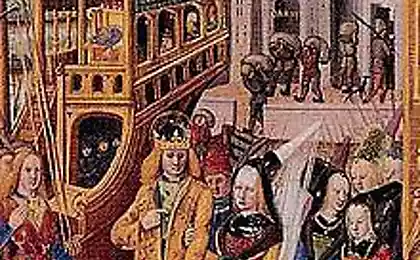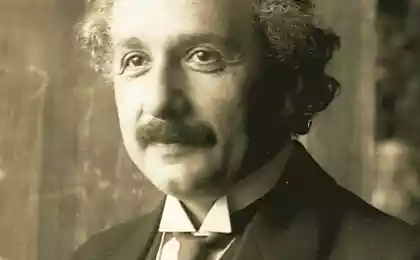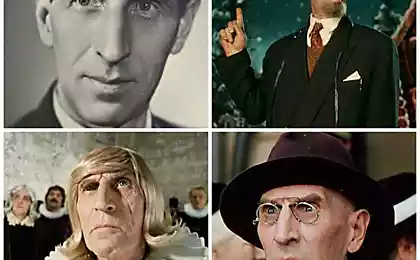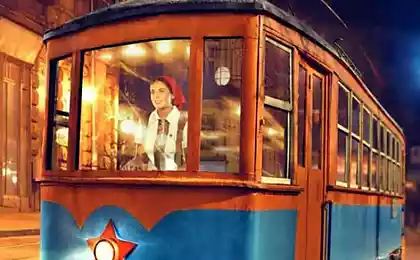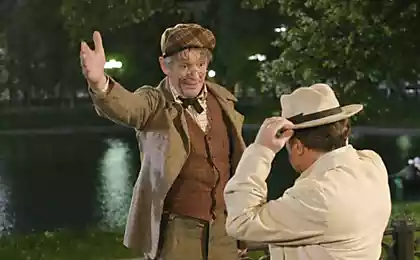1218
7 clues to the mystery novel "The Master and Margarita." Why had not I heard of this before ?!
75 years ago Mikhail Bulgakov last tip of the pen touched the manuscript of the genius of the novel "The Master and Margarita", which became required reading for millions of readers. Time passed, a lot of water under the bridge, but it's great, covered with mysteries and mysticism of the product is still a fertile field for a variety of philosophical, religious and literary discussions. This masterpiece is even included in the curriculum of several countries, although the meaning of this novel can not fully comprehend not what the average student, but even people with higher philological education.
Today, the team will try to help your site to solve a complicated puzzle to understanding the famous works. We present to you 7 keys to unsurpassed novel "Master and Margarita", which will shed light on many secrets. Why had not I heard about it at school ?!
1. Where does the name of the novel? B>
Have you about the title of this novel? Why "The Master and Margarita"? Is it a love story, or, God forbid, a melodrama? What do the book? It is known that a huge influence on the writing of the famous works had a fascination with Bulgakov German mythology of the XIX century. It is no secret that the basis of the novel, in addition to the Holy Scriptures, and Goethe's "Faust", went to a variety of myths and legends about the devil and God, as well as Jewish and Christian demonology. Contributed to writing the novel read by the author of works such as "The history of human relations with the devil" Mikhail Orlov and "Devil in everyday life, legend and literature of the Middle Ages" Alexander Amfiteatrov. As you know, the novel "The Master and Margarita" is not edited. Rumor has it that in the very first version of the product was such options titles: "Black Magician", "touring", "The Juggler with the hoof", "Hoof engineer", "Son of B." and there is not mentioned in any of the Wizard, or about Margarita as the central figure had to be Satan. It is interesting to note that in a future edition of the novel really had a version of the name, as "Satan." In 1930, after the ban of the play "The Cabal of Hypocrites" Bulgakov destroyed with their own hands the first edition of the novel. This is evidenced by the author himself: «And I personally, with his own hands, threw it into the stove draft of the novel about the devil!» I> In the second edition of the fates decree appeared Margarita and her Master, and Satan got his retinue. But the present name has received only the third edition, which is considered unfinished.
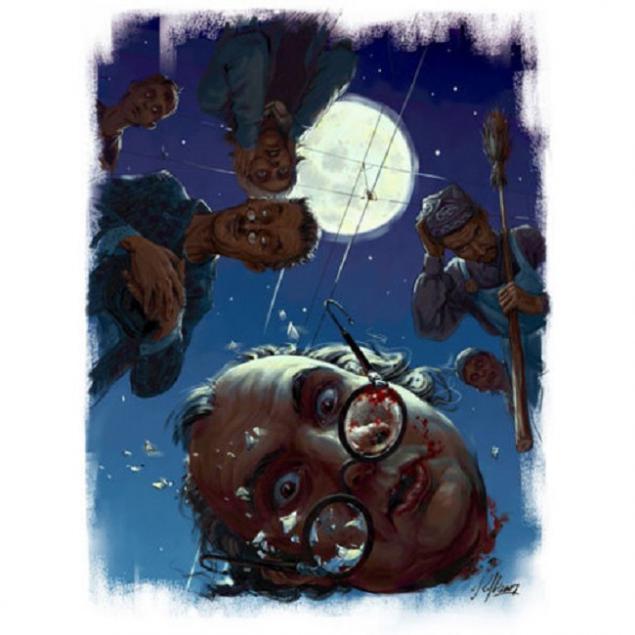
2. Voland diversity. B>
Voland is considered one of the main characters of "The Master and Margarita." He even somewhat impressed many readers, and a superficial reading might seem that the Prince of Darkness - very kind and sort of a fighter for justice who fights against human vices and helps peace and love prevail. Others believe Voland prototype of Stalin. But in fact, Woland - not as simple as it might seem at first glance. This is a very multi-faceted and difficult to understand the character. This way, in general, and ought to have the tempter. It is in some measure a classic prototype of the Antichrist, which humanity must be perceived as the new messiah. In the image of Woland and there are many analogies in the ancient pagan mythology. You also will find some similarities with the spirit of darkness from Goethe's "Faust».
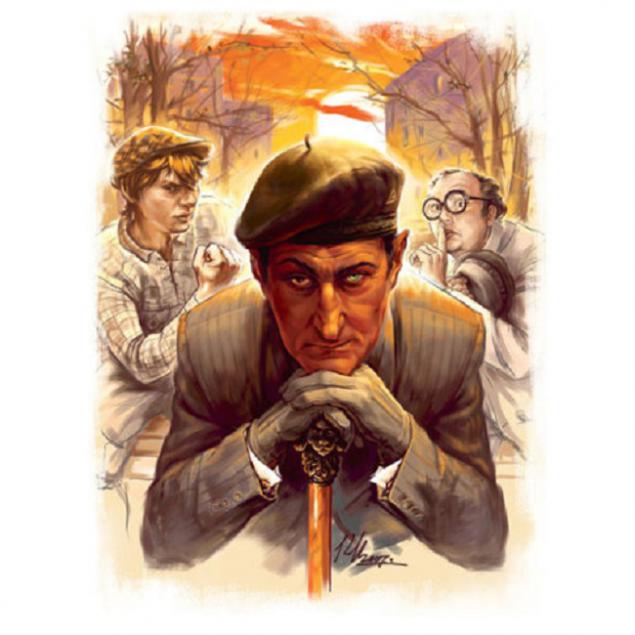
3. Woland and his retinue. B>
As a man can not exist without a shadow, and Woland - not without his retinue Voland. Azazello, Koroviev and Behemoth, Bassoon - performers diabolical justice. Sometimes one gets the impression that these colorful characters overshadow Satan himself. It is worth noting that behind them are not unambiguous past. Take, for example, Azazello. This image of Mikhail Bulgakov borrowed from the Old Testament books, mentioning the fallen angels teach people to produce weapons and ornaments. Thanks to him, women have mastered the "art of lascivious" face paint. That is why in the novel gives the cream Azazello Margarita and cunning motivates her to the side of evil. He is the right hand of Woland, performs the most menial jobs. Demon Baron Meigel kills and poisons lovers. Behemoth - werecat, poseur and poteshnik. This image is drawn from the legends of the demon of gluttony. His name is borrowed from the Old Testament, one of the books which dealt with the sea monster Behemoth, who live with Leviathan. A lot of information about the demon Behemoth author also learned about some of the stories Dezanzh Anna, who lived in the XVII century. This woman was possessed by devils 7, among whom was the evil spirit Behemoth. This demon was portrayed as a monster with an elephant head, trunk, tusks, human hands and hind legs, like a hippo.

4. Dark Queen Margot or a la Pushkin's Tatyana? B>
Many people who have read the novel, it seems that Margarita - a kind of a romantic nature, the heroine of Pushkin or Turgenev's works. But the roots of this image lies much deeper. In the novel, emphasized the connection of Margarita with two French queens. One of them - all famous Queen Margot, wife of Henry IV, whose wedding turned into a bloody St. Bartholomew's night. This dark action, by the way, there is mention in the novel. Margarita on the road to the Great Ball at Satan meets a fat man, who learned her speaking to her with the words: "bright Queen Margot". The image of Margaret literary critics also find similarities and the other queen - Marguerite of Navarre, one of the first French women writers. Bulgakov's Margarita is also close to the belles-lettres, she is in love with his brilliant writer - Masters.
5. Spatial and temporal relationship "Moscow - Yershalaim». B>
One of the key mysteries of "The Master and Margarita" - this is the place and time of the events taking place in the novel. You will not find here any exact date on which it is possible to count. In the text there are only hints. Events in the novel takes place in Moscow in the Holy Week from 1 to 7 May 1929. This part of the book is closely connected with the so-called "Pilatovskimi heads", which describes the week Yershalaim '29, who later became Holy. The attentive reader will notice that in the New Testament Moscow 1929 and the Old Testament Yershalaim '29 is the same apocalyptic weather, the action in both of these stories are developed in parallel and finally merge together, painting a complete picture.
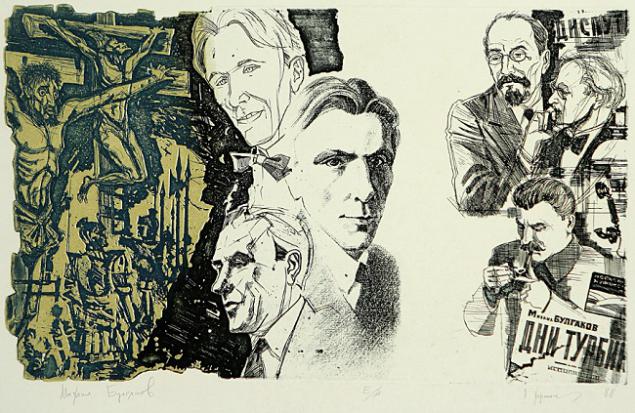
6. Influence of Kabbalah. B>
It is said that Mikhail Bulgakov, when he wrote the novel, was heavily influenced by Kabbalistic teachings. This has affected the work itself. Just remember the winged words of Woland: «never asked for anything. Do nothing, especially those who are stronger than you. Sami offer themselves everything will ». I> It turns out that Kabbalah is forbidden to take anything unless it's a gift from above, from the Creator. This is contrary to the commandment of Christianity, which, for example, prohibited begging. One of the central ideas of the Kabbalah is a doctrine of the "Ohr Chaim and" - "the light of life." It is believed that the Torah itself is light. Achievement of light depends on the wishes of the man himself. The novel is also at the forefront the idea that a person carries out his own life choices. The light also accompanies Voland throughout the novel. When Satan disappears with his retinue, the moon disappears and the road.
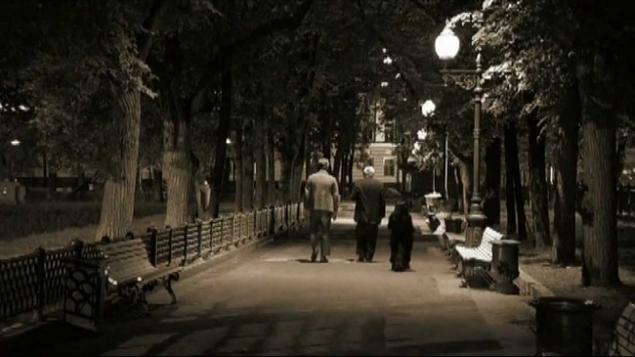
7. Novel of a lifetime. B>
The last manuscript, which subsequently came to us, Mikhail Bulgakov began in 1937, but she did not give rest to the writer until his death. He kept constantly brought into it some changes. Perhaps Bulgakov thought he was badly informed in Jewish demonology and the Scriptures, he may feel an amateur in this field. This is just a guess, but one thing is for sure - the novel the writer was not easy and virtually "sucked" out of him all the vital forces. It is interesting to know that the last corrections, which Bulgakov made February 13, 1940, were the words of Margaret: «It is, therefore, the writers behind the coffin go?». I> A month later, the writer died. According to the wife of Bulgakov, his last words before he died were: «To know, to know ...» i>
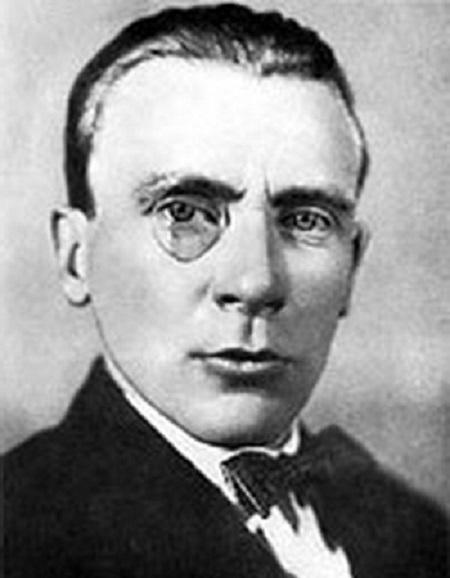
No matter how we interpret this work, it is impossible to fully explore. It is a masterpiece so deep that it can solve Eternity, but did not get to its essence. The main thing is that this novel raises questions about the high and comprehend the important truths of life. Tell your friends about these 7 keys that will revolutionize their idea of the novel.
via ofigenno ru
Today, the team will try to help your site to solve a complicated puzzle to understanding the famous works. We present to you 7 keys to unsurpassed novel "Master and Margarita", which will shed light on many secrets. Why had not I heard about it at school ?!
1. Where does the name of the novel? B>
Have you about the title of this novel? Why "The Master and Margarita"? Is it a love story, or, God forbid, a melodrama? What do the book? It is known that a huge influence on the writing of the famous works had a fascination with Bulgakov German mythology of the XIX century. It is no secret that the basis of the novel, in addition to the Holy Scriptures, and Goethe's "Faust", went to a variety of myths and legends about the devil and God, as well as Jewish and Christian demonology. Contributed to writing the novel read by the author of works such as "The history of human relations with the devil" Mikhail Orlov and "Devil in everyday life, legend and literature of the Middle Ages" Alexander Amfiteatrov. As you know, the novel "The Master and Margarita" is not edited. Rumor has it that in the very first version of the product was such options titles: "Black Magician", "touring", "The Juggler with the hoof", "Hoof engineer", "Son of B." and there is not mentioned in any of the Wizard, or about Margarita as the central figure had to be Satan. It is interesting to note that in a future edition of the novel really had a version of the name, as "Satan." In 1930, after the ban of the play "The Cabal of Hypocrites" Bulgakov destroyed with their own hands the first edition of the novel. This is evidenced by the author himself: «And I personally, with his own hands, threw it into the stove draft of the novel about the devil!» I> In the second edition of the fates decree appeared Margarita and her Master, and Satan got his retinue. But the present name has received only the third edition, which is considered unfinished.

2. Voland diversity. B>
Voland is considered one of the main characters of "The Master and Margarita." He even somewhat impressed many readers, and a superficial reading might seem that the Prince of Darkness - very kind and sort of a fighter for justice who fights against human vices and helps peace and love prevail. Others believe Voland prototype of Stalin. But in fact, Woland - not as simple as it might seem at first glance. This is a very multi-faceted and difficult to understand the character. This way, in general, and ought to have the tempter. It is in some measure a classic prototype of the Antichrist, which humanity must be perceived as the new messiah. In the image of Woland and there are many analogies in the ancient pagan mythology. You also will find some similarities with the spirit of darkness from Goethe's "Faust».

3. Woland and his retinue. B>
As a man can not exist without a shadow, and Woland - not without his retinue Voland. Azazello, Koroviev and Behemoth, Bassoon - performers diabolical justice. Sometimes one gets the impression that these colorful characters overshadow Satan himself. It is worth noting that behind them are not unambiguous past. Take, for example, Azazello. This image of Mikhail Bulgakov borrowed from the Old Testament books, mentioning the fallen angels teach people to produce weapons and ornaments. Thanks to him, women have mastered the "art of lascivious" face paint. That is why in the novel gives the cream Azazello Margarita and cunning motivates her to the side of evil. He is the right hand of Woland, performs the most menial jobs. Demon Baron Meigel kills and poisons lovers. Behemoth - werecat, poseur and poteshnik. This image is drawn from the legends of the demon of gluttony. His name is borrowed from the Old Testament, one of the books which dealt with the sea monster Behemoth, who live with Leviathan. A lot of information about the demon Behemoth author also learned about some of the stories Dezanzh Anna, who lived in the XVII century. This woman was possessed by devils 7, among whom was the evil spirit Behemoth. This demon was portrayed as a monster with an elephant head, trunk, tusks, human hands and hind legs, like a hippo.

4. Dark Queen Margot or a la Pushkin's Tatyana? B>
Many people who have read the novel, it seems that Margarita - a kind of a romantic nature, the heroine of Pushkin or Turgenev's works. But the roots of this image lies much deeper. In the novel, emphasized the connection of Margarita with two French queens. One of them - all famous Queen Margot, wife of Henry IV, whose wedding turned into a bloody St. Bartholomew's night. This dark action, by the way, there is mention in the novel. Margarita on the road to the Great Ball at Satan meets a fat man, who learned her speaking to her with the words: "bright Queen Margot". The image of Margaret literary critics also find similarities and the other queen - Marguerite of Navarre, one of the first French women writers. Bulgakov's Margarita is also close to the belles-lettres, she is in love with his brilliant writer - Masters.
5. Spatial and temporal relationship "Moscow - Yershalaim». B>
One of the key mysteries of "The Master and Margarita" - this is the place and time of the events taking place in the novel. You will not find here any exact date on which it is possible to count. In the text there are only hints. Events in the novel takes place in Moscow in the Holy Week from 1 to 7 May 1929. This part of the book is closely connected with the so-called "Pilatovskimi heads", which describes the week Yershalaim '29, who later became Holy. The attentive reader will notice that in the New Testament Moscow 1929 and the Old Testament Yershalaim '29 is the same apocalyptic weather, the action in both of these stories are developed in parallel and finally merge together, painting a complete picture.

6. Influence of Kabbalah. B>
It is said that Mikhail Bulgakov, when he wrote the novel, was heavily influenced by Kabbalistic teachings. This has affected the work itself. Just remember the winged words of Woland: «never asked for anything. Do nothing, especially those who are stronger than you. Sami offer themselves everything will ». I> It turns out that Kabbalah is forbidden to take anything unless it's a gift from above, from the Creator. This is contrary to the commandment of Christianity, which, for example, prohibited begging. One of the central ideas of the Kabbalah is a doctrine of the "Ohr Chaim and" - "the light of life." It is believed that the Torah itself is light. Achievement of light depends on the wishes of the man himself. The novel is also at the forefront the idea that a person carries out his own life choices. The light also accompanies Voland throughout the novel. When Satan disappears with his retinue, the moon disappears and the road.

7. Novel of a lifetime. B>
The last manuscript, which subsequently came to us, Mikhail Bulgakov began in 1937, but she did not give rest to the writer until his death. He kept constantly brought into it some changes. Perhaps Bulgakov thought he was badly informed in Jewish demonology and the Scriptures, he may feel an amateur in this field. This is just a guess, but one thing is for sure - the novel the writer was not easy and virtually "sucked" out of him all the vital forces. It is interesting to know that the last corrections, which Bulgakov made February 13, 1940, were the words of Margaret: «It is, therefore, the writers behind the coffin go?». I> A month later, the writer died. According to the wife of Bulgakov, his last words before he died were: «To know, to know ...» i>

No matter how we interpret this work, it is impossible to fully explore. It is a masterpiece so deep that it can solve Eternity, but did not get to its essence. The main thing is that this novel raises questions about the high and comprehend the important truths of life. Tell your friends about these 7 keys that will revolutionize their idea of the novel.
via ofigenno ru
You will not believe, but to be fashionable gray now ...! These hot "stuff" has already conquered the entire Internet.
21 This animal is albino in color does not need to be spectacular. See it - a rare luck!

